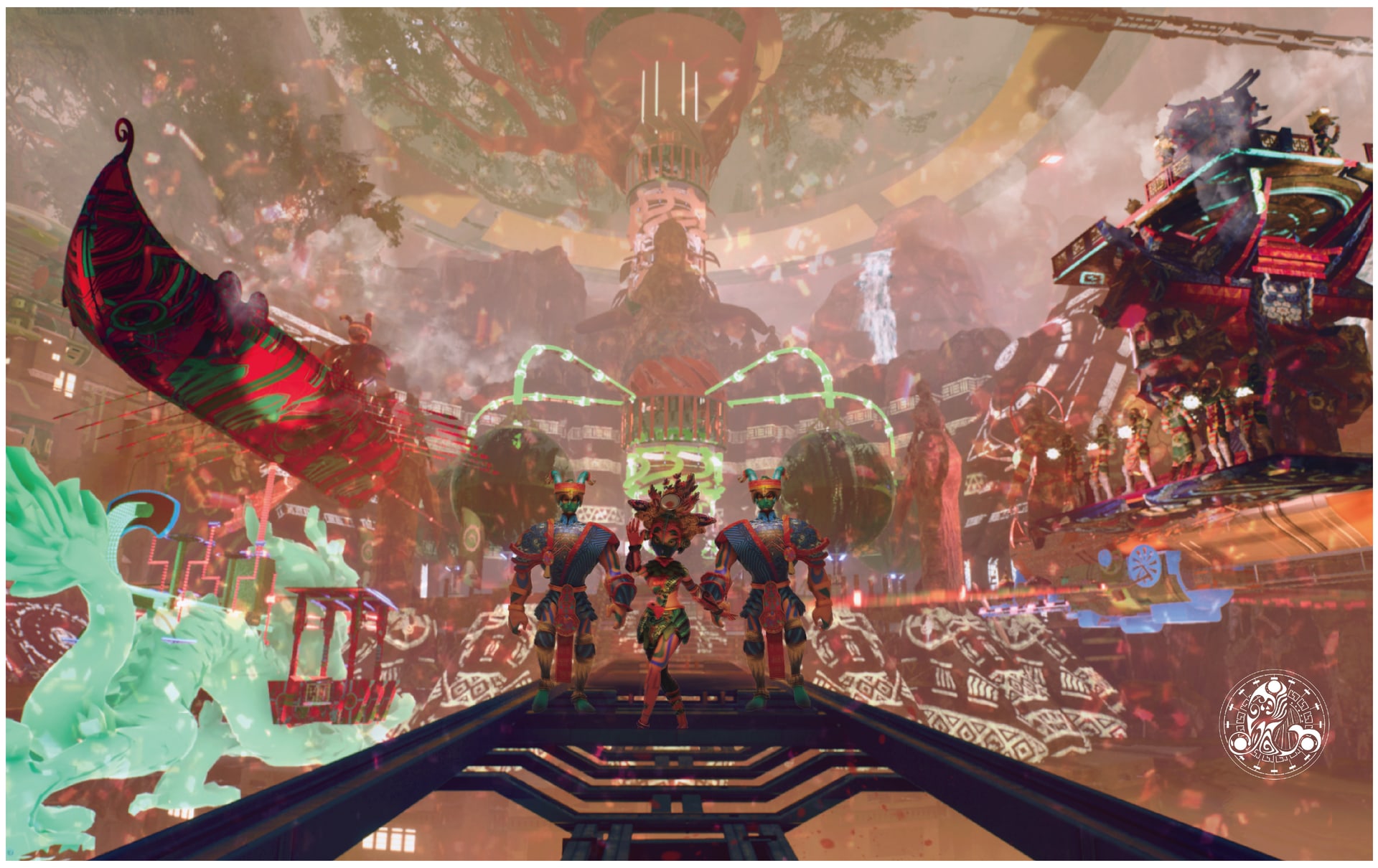我计划开发一种结合虚拟VR的沉浸式物理交互游戏体验,设想人类为应对海平面上升而重建的社会结构,并以仪式为叙事内容,引导观众参与与未来气候变化相关的问题,推测人类与自然地理空间和生态系统之间的新关系。在IED工作期间,我渴望更多地了解人们将来如何与生态和地理空间系统互动。我对这个领域的兴趣始于我对图腾文化的本科学习。图腾信仰本质上是自然崇拜的拟人化概念。在早期,人们会崇拜植物或动物作为保护者来祈祷好天气。然而,在当今时代,随着人类中心主义的兴起,对非人类物种的态度逐渐从尊重转向压迫,导致整个生态系统的恶化。2022年,NOAA发布的一份报告显示,到25年,海平面预计将上升30-2050厘米。伴随海平面上升而来的还有极端天气的增加,野生动物种群和栖息地正在发生变化,生存空间正在受到挤压。面对日益减少的陆地,两难的境地将是继续攫取更多资源生存,还是重新分配人类和非人类物种的领土以减缓生态退化的进程。近年来,我的设计实践开始更多地关注跨媒体叙事表现,通过创建可视化、模拟和沉浸式环境来讲述故事。这种做法让我有信心探索气候变化下世界的未来面貌
Wenyu Wu


The ocean is the cradle of life, from evolution, reproduction, to breathing, the life and survival of species are closely related to the ocean. However, according to the results of recent scientific experiments, the earth's climate, and environment are in serious trouble. And in the future, sea levels will likely rise to a point where humans will struggle to survive. The marine homeland on which humans rely most for survival will become one of the great threats to human survival. Under this condition, a series of issues such as how people adapt to the increasingly reduced living space, and how the relationship between people and natural ecosystems will develop gradually are unfolding. My project uses this as a starting point to speculate about the world under the future climate crisis and uses China as a representative for narrative structure. In response to the problem of rising sea levels, Chinese people have moved cities to the highest mountain range, the Himalayas, in search of survival. Due to the dramatic changes in living space, lifestyle has been reshaped, and new social structures and ritual cultures have emerged, which reminds people of the constant changes in the planet, while people always coexist with ecology.
In the construction of my world, in the next 60 years, the sea level rise and the squeeze of living space caused by climate issues have become the main driving force for world development. In order to avoid being submerged by seawater, most countries choose to migrate to the mountains and begin to develop cities on mountains in order to seek more living space. In this context, with the advent of the "Mountain Age", new social structures and cultures have emerged, extending the branches of human civilization, and establishing a composite social structure that integrates economy, society, and culture, coexisting with the oceans and mountains.
1. Social structure:
In China in 2085, people were forced to migrate to the Himalayas, the highest mountain range in the inland plateau region, due to the impact of sea level rise. In order to adapt to the new geographical space, the country was divided into three major areas according to the height of the terrain: The measurement warning area at the bottom of the mountain, the Living area on the mountainside, and the Energy area on the top of the mountain, to provide energy to this society. Under the new social structure, mankind will find hope and unite again to work together to cope with this natural disaster.
2. Ritual culture:
The natural disasters caused by climate issues have brought great warnings to the countries of the apocalypse, and have awakened people's primitive worship of nature. People are eager to better understand the needs of nonhuman species, and a new totem culture has been revived. Through totems and rituals, people reconnect secular human life with nature and spirituality. "Mountain Sacrifice" emerged as the times require. People celebrate the interconnectedness that occurs every time the sea level drops and offers themselves as sacrifices to nature. They are grateful for the mutual demands and supplies between humans, oxygen, plants, and the sea, and form a tight symbiotic relationship again in the limited living space. It aims at not forgetting the original intention, offering sacrifices to the ocean and mountains that nurtured all things, and also repenting of the mistakes made by humans in the past.
My main outcome at this stage is a gaming experience where when people encounter my work they enter the future world as a player in the present and go through three levels from the bottom to the top of the mountain, each level showing a different aspect of the city. In the scenes, they are free to explore, to put together the pieces of the world to understand the reasons for the formation of the future world and to reflect on the severity of the current environmental situation after they have traveled the whole way. It's more like an online immersive theatre where the audience is personally involved in the future world and interacts to piece together what it will look like, which is more interesting and insightful than just being told what it is.